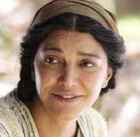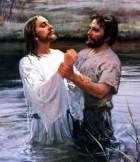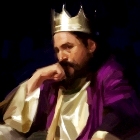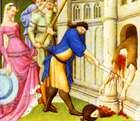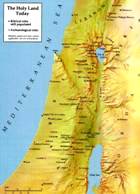John the Baptist: Prepare!
People in John’s story
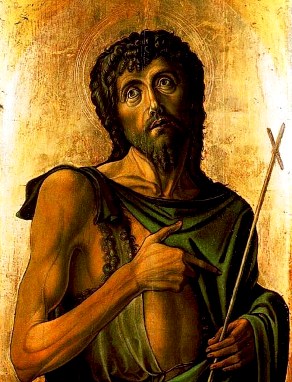 John, prophet and baptiser in 1st century Palestine, seen by Christians as the precursor of Jesus of Nazareth, who became a young disciple of John’s
John, prophet and baptiser in 1st century Palestine, seen by Christians as the precursor of Jesus of Nazareth, who became a young disciple of John’s- Zechariah and Elizabeth, John’s elderly parents
- Herod Antipas, ruler of Galilee (home territory of Jesus of Nazareth) and Perea (John’s native province); Herod executed John
John’s early life
John was born somewhere in Judea to Zechariah, a priest of the order of Abijah, and his wife Elizabeth, a kinswoman of Mary the mother of Jesus. He came of priestly stock.
His early years – how early we don’t know – were spent in the Judean desert, where monastic communities such as the Essenes and individual hermits often educated the young.
the Essenes and individual hermits often educated the young.
By about 27AD John was becoming well-known as a prophet, active in the region of the lower Jordan Valley. He dressed as a hermit, in an austere camel’s hair garment, and ate a hermit’s sparse diet – locusts and wild honey ( see What they ate in Bible times for instructions on how to cook locusts!).
He was probably a Nazarite, dedicated from birth to God’s service – this would explain his diet.
John prepares the way of the Lord
He believed he had a mission from God to call all ranks and stations of Jewish society, telling them that God’s judgment on a sinful world was about to happen.
People should prepare by thinking about the wrong they had done, and repenting. They should be baptized, and show by their actions that they were truly sorry for the sins they had committed.
John’s Baptism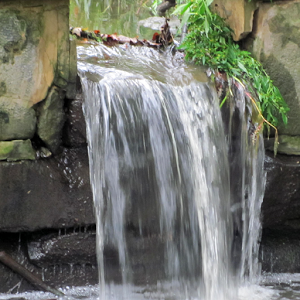
John practised a rite of baptism that entailed immersion in running water – an overall cleansing that prepared the baptised person for the coming world judgment.
The thinking behind this may or may not have been linked with the Jewish people’s passage through the Red Sea, when they crossed from slavery into freedom.
Baptism in water, experienced in the present time, may have been linked with the future baptism by the Holy Spirit in a river of fire – many people at that time believed that a world cataclysm was imminent.
John may have been influenced by the beliefs of the Essene community, but there were important differences in his teachings:
- he did not try to set up an organized community
- he did not stress Mosaic Law
- his message was directed to a wider group, to the poor and sinners.
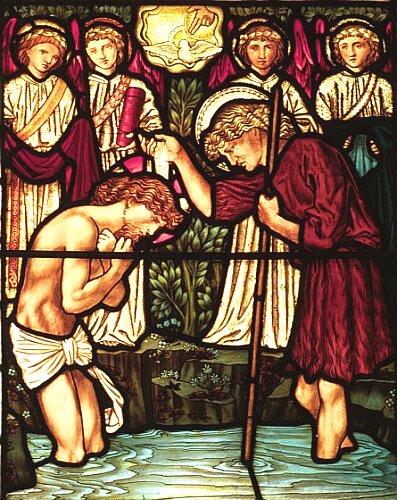
John the Baptist baptises Jesus, stained glass window designed by Edward Burne-Jones
John and Jesus meet
Jesus briefly joined John and was baptised by him – he quoted Malachi 3:1 to show that John was the last and greatest of the prophets, preparing for the coming of God’s Kingdom –
“See, I am sending my messenger ahead of you, who will prepare your way before you” (Luke 7:27).
Many of John’s disciples would later become followers of Jesus.
John attacks Herod
John preached fiery words to larger and larger crowds of people.
He was critical of the social order, and he eventually ran foul of Herod Antipas, ruler of the area where he preached. With his ability to influence large numbers of people, and his open hostility towards Herod, John represented a real political threat.

The fox was known for its needless destruction, killing more prey than it could ever need
Herod tried to maneuver – Jesus referred to Herod as ‘that fox’, and it was a shrewd description. A fox is beautiful to look at, but like Herod it is cunning and destructive.
Herod tried hard to flatter and placate John by inviting him to speak before him and voice his complaints and suggestions. He wanted to keep John on side as much as he could.
John made enemies at court in the process, but Herod was loathe to do anything about it – he was by nature a procrastinator, or else politically astute enough to avoid confrontation if he could.
John attacks Herodias
Eventually, however, John went too far. The gospels say he criticized the marriage between Herod and Herodias, the divorced wife of Herod’s half-brother.
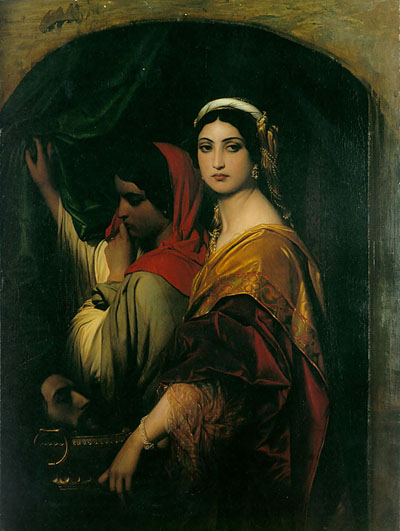
Herodias, by Delaroche
To marry Herodias, Herod had divorced his first wife, the daughter of the king of the neighboring kingdom of Nabatea, an action that was bound to cause offense if not outright war between the two kingdoms.
There was a danger that, with John prodding them, Herod’s subjects might join the Nabateans in a war/rebellion to avenge the dishonor this second marriage had caused.
Herod could not afford to let this happen.
The quickest way to get rid of the problem was to cut off its head, and this is what Herod did.
There is a sexually suggestive story in the gospels naming Herodias as the instigator of this plot, and her daughter Salome as the seductive dancer who goaded Herod into killing John – but in fact the scene had probably been planned and rehearsed beforehand by all three.
John is beheaded
However it happened, John was executed by beheading. Then, as now, it was a horrible way of killing someone.

Salome Receiving the Head of John the Baptist, Luini
He had been imprisoned in the fortress of Machaerus, and when the message from Herod came, the gaoler used a sword to cut off his head.
John’s followers were distraught; what they had feared all along had now happened. Herod allowed them to recover John’s body and bury it.
Herod’s effort to suppress criticism of his marriage failed. A few years later Aretas IV of Nabatea, father of Herod’s discarded first wife, went to war against Herod and soundly beat him.
Perhaps the Jewish historian Josephus was right when he said that Herod’s defeat was divine vengeance for his execution of John.
Search Box
![]()
© Copyright 2006
Elizabeth Fletcher

